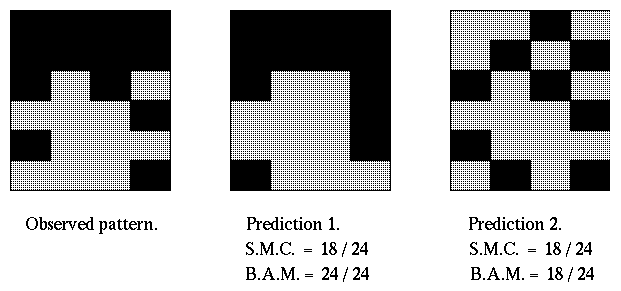
It is often important in ecology to produce statistical models of spatial population distribution, so that changes in species range or abundance can be detected or occurrence can be linked with particular habitat types. We need to discriminate between different models to find one that best describes the data. This can be done by comparing model predictions with observation --- so we need some way of assessing the similarity of two spatial distributions.
The simple matching coefficient (SMC) for two presence/absence distributions on a set of sites simply counts the number of sites which have the same status (presence or absence) in both distributions. This measure does not capture global similarity very well, and is also highly sensitive to the stochastic variation inevitable when dealing with predictions from statistical models.
To take account not only of the number of matched sites, but also their positions, we can introduce a clique structure. The clique of any site is simply a set of neighbouring sites such that free movement of individuals can occur between the initial site and those sites in its clique. Usually cliques are determined by proximity or habitat cover. Two sites in a clique which have opposite presence/absence status may be swapped, that is, the status of each reversed, representing movement out of one site and into the other. The similarity of the two distributions can then be measured by the best attainable match (BAM), which is the highest value of the simple matching coefficient attainable by performing swaps in the second distribution. This measure is more stable to stochastic variation and gives a better indication of overall pattern than the simple matching coefficient alone. The diagram below gives a simple illustration of the technique. Both of the predicted distributions, when compared with the observed data, give the same value of the simple matching coefficient, but the greater overall similarity of the first prediction to the observed is apparent from the BAM coefficients.

Software for calculating the best attainable match is available from here.